Peak paranoia: two classics on Blu-ray
Among my recent finds while trading in Blu-rays are a pair of significant movies which emerged from the chaos of the 1960s
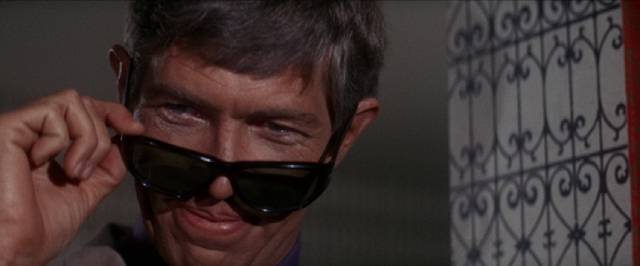
The President’s Analyst (Theodore J. Flicker, 1967)
The late 1960s and ’70s were rife with paranoia. The Cold War, the deep-seated fear of communism, the decay of long-standing empires with their wars of colonial resistance in Africa and Asia, all created a fertile ground for distrust which could easily tip over into madness – in the United States, that tipping point came with the counterculture’s rejection of post-war conservatism and the escalating war of aggression against Vietnam, peaking with Nixon’s own descent into paranoia, the revelations of the Pentagon Papers and the Watergate scandal. All these currents were reflected in popular culture, two key ur-texts being John Frankenheimer’s The Manchurian Candidate (1962) and Stanley Kubrick’s Dr. Strangelove (1962), both of which viewed the Cold War landscape through a satirical lens because there was something inherently absurd about the paranoia.
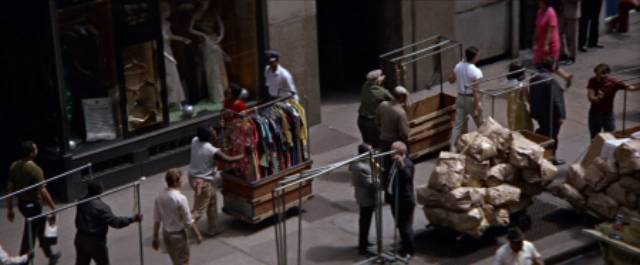
In 1967, Theodore J. Flicker’s The President’s Analyst was released to mixed reviews – Roger Ebert gave it a rave, but Howard Thompson in the New York Times thought it sank ignominiously in the third act. That ending, which he deemed ridiculous and misjudged, looks somewhat prescient now. I hadn’t seen the film since catching it on television sometime in the ’70s, and in my memory it was somewhat conflated with star James Coburn’s two Derek Flint spy parodies. Watching it now for the first time in decades, it has aged much better than that pair of too-broad Bond pastiches, and in fact seems very fresh, with Coburn more relaxed and not pushing the comedy into outright farce.
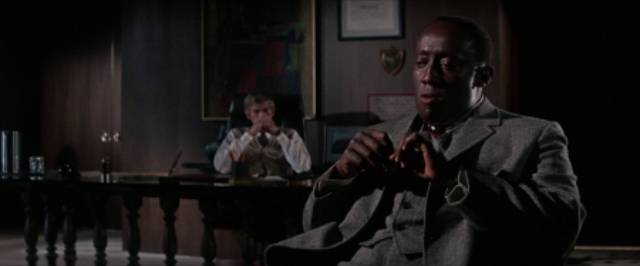
Writer-director Flicker had come out of improvisational sketch comedy and television, with only one previous feature, and The President’s Analyst has a slightly loose structure which might easily have devolved into a series of skits if not for a well-constructed script and Coburn’s performance, which anchors the comic business in a coherently paranoid view of the world. The title sequence could well have come from any one of the more serious paranoid thrillers of the ’70s; William A. Fraker’s camera peers down into the crowded streets of New York, picking out a number of individuals whose significance we don’t yet understand. Cutting to disorienting close-ups at street level, we see someone being stabbed unnoticed in the midst of the bustling crowd. Then we follow a Black man pushing a rack of clothing along the sidewalk until he reaches a couple of other men, pulls off his afro and declares that he has an appointment to get to.
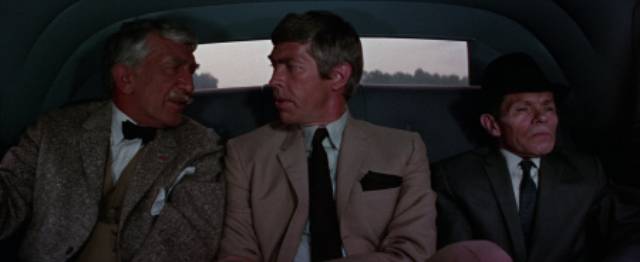
In his office, Dr. Sidney Schaeffer (Coburn) meditates with a gong. He’s interrupted by the Black man, Don Masters (Godfrey Cambridge), who begins his therapy session by declaring that he’s just come from killing a man. Schaeffer takes the confession in stride, learning for the first time that Masters is a government agent and that his sessions have actually been a method for vetting the doctor because he’s needed for a secret job – telegraphed, of course, by the film’s title. Flown to Washington, the doctor meets the feuding heads of two agencies – identified originally in the script as the FBI and the CIA, they had to be redubbed in post-production as the FBR and the CEA because in 1967 it was apparently not permitted to mock America’s secret police. The avuncular CEA head Ethan Allan Crocket (Eduard Franz) is solicitous, but the cranky FBR head Henry Lux (Walter Burke) is dead against the security risk of having this New York doctor getting access to the President’s most intimate secrets.
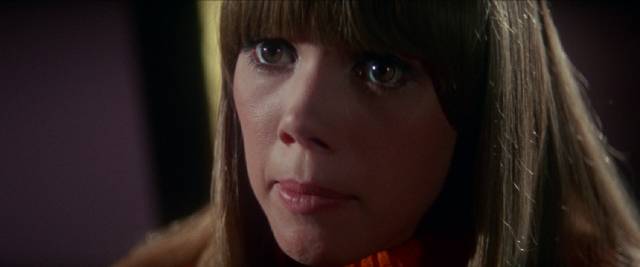
The first casualty of the assignment is Schaeffer’s relationship with his fiancee Nan Butler (Joan Delaney); with his new Washington home bugged, it’s discovered that the stress of the job – sharing the burden of the President’s responsibilities – is making him talk in his sleep, so Nan has to move out. Things get rapidly worse as his new knowledge of state secrets makes Schaeffer increasingly paranoid, an earned paranoia as agents from numerous countries (Russia, China, Britain and Canada among them) want to get their hands on him, confirming Lux’s fears – ironically, the foreign agents want him alive, but Lux wants him dead. And so the doctor goes on the run.
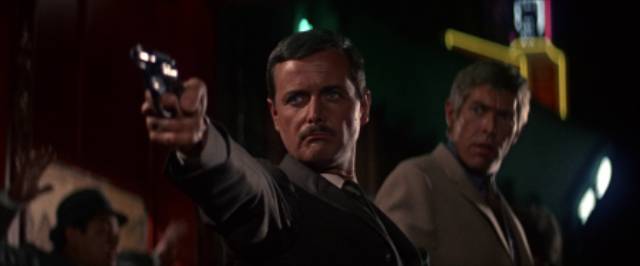
This gives Flicker an opportunity to sketch in different topical aspects of then-current American society, beginning with the liberal middle-class Quantrill family (dad William Daniels, mom Joan Darling and son Sheldon Collins), whom he attaches himself to in a White House tour group in order to make a getaway. The Quantrills prove to be as crazy and dangerous as the paranoid Right, talking about gassing their “Fascist neighbours” and packing serious firepower. While son Bing bugs Schaeffer’s phone call and betrays him to the FBR, his parents engage in a deadly firefight outside a Chinese restaurant when trained FBR agents attempt a hit on Schaeffer after a dinner out.
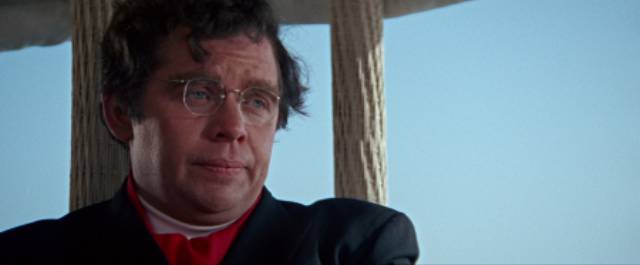
On the run again, the doctor slips into the tour bus of a band of hippie musicians and ends up in the country enjoying a moment of communal free-love with Snow White (Jill Banner). While they relax in a grassy meadow, numerous agents close in, bumping each other off as they vie to take possession of the valuable fugitive. Eventually, he’s captured by Canadian agents and tied up on a boat on the Great Lakes, but even there the factions attack each other; Schaeffer manages to escape with easy-going Russian agent Kropotkin (Severn Darden), but is kidnapped once again – this is where the movie lost the Times critic, because we finally find out who the real villains are: the phone company, which is controlled by AI-powered robots which plan to implant microchips in every citizen’s brain to facilitate instant communications (and the complete obliteration of privacy). Far-fetched perhaps in 1967, but now seeming very forward-looking in light of today’s trends in social media, AI and Elon Musk’s insane push to install Neuralink brain chips in everyone.
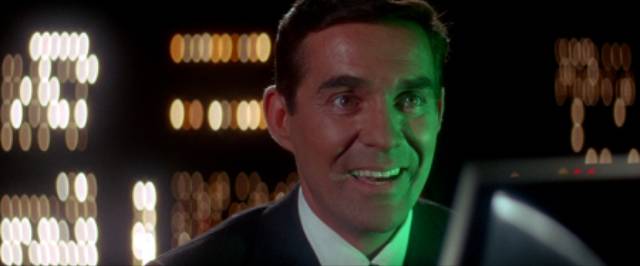
Flicker manages to capture the flavour of the times and even project trends into a plausible future while maintaining a breezy comic tone with sharp writing and great performances. William Fraker’s cinematography and Lalo Schiffrin’s score add to the film’s stature, so it seems strange that it has maintained a relatively low, underappreciated profile for more than fifty years. Imprint’s disk includes appreciative contributions from Tim Lucas (in a commentary) and Kim Newman (in an interview). (There was a region A release from Kino Lorber last year which used the same fine transfer and retained the Lucas commentary, but dropped Newman’s interview and replaced it with a second commentary from Julie Kirgo and Peter Hankoff.)
*
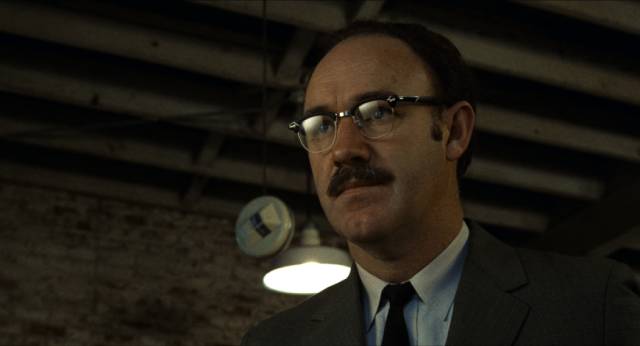
The Conversation (Francis Ford Coppola, 1974)
Perhaps the problem with The President’s Analyst was that by 1967 people were less willing to view social and political chaos through a comedic lens. The strain of paranoia in American life had come to seem all-too justified and the films reflecting it quickly became much darker as the decade ended and political certainties completely collapsed in the ’70s, whether fact-based like Alan Pakula’s All the President’s Men (1976), “speculative history” like David Miller’s Kennedy assassination movie Executive Action (1973), or fiction like Pakula’s Klute (1971) and The Parallax View (1974), Sidney Pollack’s Three Days of the Condor (1975) and Arthur Penn’s Night Moves (also 1975). In all these films, the threat comes from inside the house, unsuspecting citizens becoming victims of either clandestine government agencies, sinister corporations or simply unscrupulous vested interests.
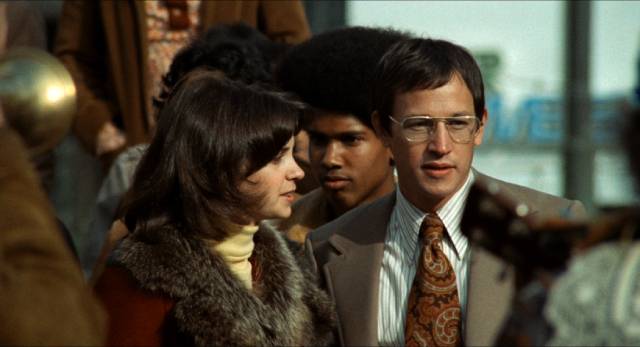
As good as many of these movies are, however, one stands as the quintessential ’70s paranoid thriller: Francis Ford Coppola’s The Conversation (1974). Made between the first two parts of The Godfather saga (1972, 1974), modestly financed by Paramount as a kind of reward for Coppola acquiescing to their pressure to make a Godfather sequel, this most personal of Coppola’s movies (and arguably his best) seemed preternaturally timely as it was released at the height of the Watergate scandal – and was widely interpreted as a commentary on that, even though Coppola had begun work on the script in the mid-’60s. Inspired in part by Michelangelo Antonioni’s Blow-Up (1966), the script replaces photography with sound recording as its central device, reflecting Coppola’s fascination with technological innovations, but also pointing to the even more insidious intrusions into people’s privacy being developed rapidly by both corporate and government entities.
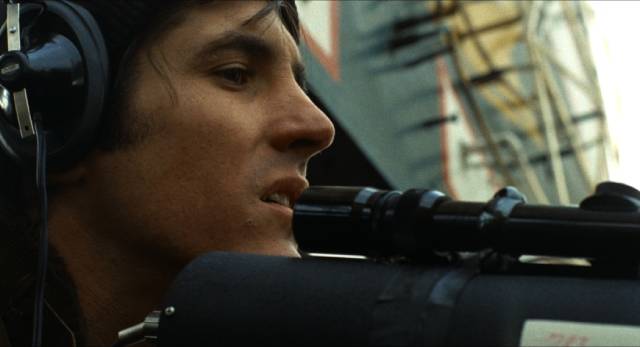
One of the key things which distinguishes The Conversation from most other paranoid thrillers is that, rather than focusing on the victims of surveillance, it takes as its protagonist the eavesdropper, a technician who devises ways of spying on others’ most private moments. He’s not the power which secretly controls society, but a middleman who serves those powers. For him, the job is a technical challenge, its meaning and implications irrelevant. Harry Caul (Gene Hackman) is the top man on the West coast, but he has no interest in who hires him or why; at least, that’s what he tells himself and anyone else who asks. And yet, a lapsed Catholic, he is rife with guilt. We learn that he left the East coast after an “impossible” job led to the murder of an entire family. Not his fault or responsibility, he asserts, but it haunts him.
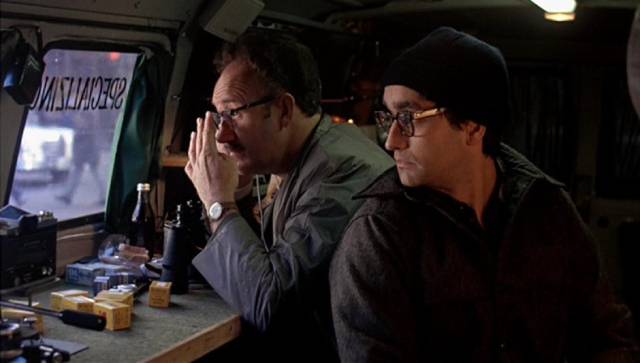
And so when his current, equally difficult, job points towards another potential murder, his attempts to separate himself from consequences break down and, in violation of his professional instincts, he finds himself ineffectually trying to intervene only to discover too late that he’s misunderstood what he’s heard on the tapes he and his team have recorded. In the end, he finds himself under surveillance by those he was working for, stripped of his jealously guarded privacy just as he has stripped his targets of theirs. Immersed in the culture and technology of spying, he discovers that the wall he has erected around his own life is totally illusory, just as his attempts to evade moral culpability through professional detachment has been a self-serving delusion.
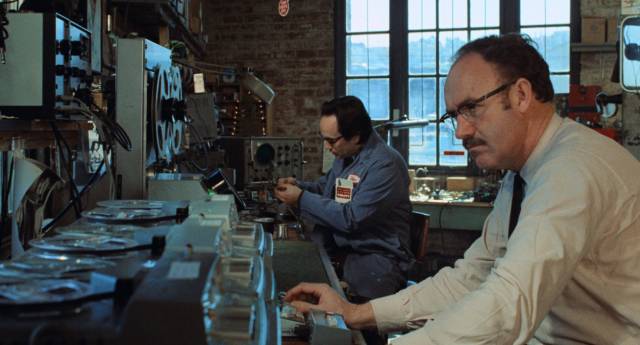
By standard definitions, Coppola’s film isn’t what most viewers would call a “thriller”; it’s a character study and a morality play, almost claustrophobically interior. We’re trapped inside Harry, a deeply unsympathetic character whose treatment of other people – his kind-of girlfriend (Teri Garr), whom he treats like a prostitute; his employee (John Cazale), whom he refuses to share his technical knowledge with; his rivals in the business, particularly a brash operative from the East coast (Allen Garfield) – is off-putting because it’s rooted in a complete inability to trust. The one moment when he does open up just a little seems to reinforce that distrust; confessing some emotional confusion to a woman at a party, he finds himself being mocked because the conversation has been bugged and is replayed for the party crowd – this betrayal compounded when he discovers that the woman he was talking to was playing him in order to steal the tapes he’s been withholding from his client out of fear that they might trigger a murder.
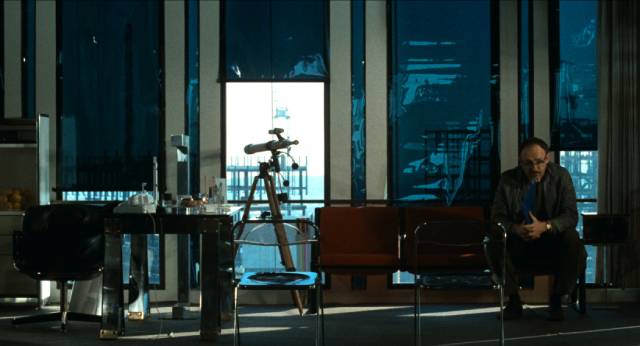
And yet, despite this deeply flawed character, Coppola draws us inexorably in with his treatment of the technology of surveillance. The problem facing Harry is how to record a conversation between two people moving constantly in a crowded public space. The opening scene shows us his solution before we know (or understand) the actual content of the scene. In an interesting echo, this sequence bears some similarity to the opening sequence of The President’s Analyst; the camera begins high above Union Square in San Francisco at lunchtime; people are strolling, eating, listening to a band play jazz, being bothered by an intrusive mime. As the camera slowly closes in we begin to notice some individuals – a man in a raincoat being mimicked by the mime; a man with an earphone, carrying a shopping bag; a young couple – and start to catch disjointed words and phrases.
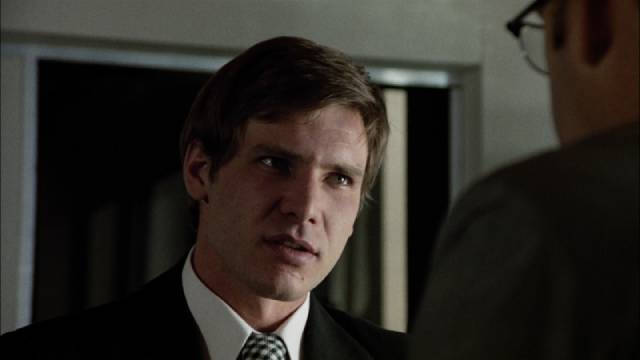
Down in the crowd, focus settles on the young couple (Frederic Forrest and Cindy Williams) being followed by the man with the shopping bag, and we can see that the man in the raincoat is observing the couple. He eventually leaves the Square and enters a van parked across the street where another man is supervising an array of electronic equipment; there are three tape recorders, one recording from a microphone carried by the man with the shopping bag, the other two recording from high-powered directional microphones being aimed by two other men with vantage points overlooking the Square. It’s no coincidence that the latter bear an uncanny resemblance to sniper rifles – this surveillance carries with it a threat of impending violence. (This opening sequence was shot by Haskell Wexler, but he and Coppola parted ways and the rest of the film is the work of Bill Butler.)
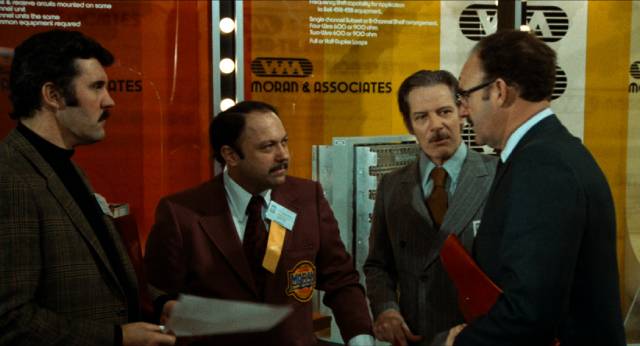
As the photographer in Blow-Up gradually homes in on a single detail in a picture he shot randomly in a park until he believes that he inadvertently captured an image of a murder, Harry sets about cleaning up the three messy recordings, using filters and cutting from one tape to another until all the extraneous noise is cleaned away and we can hear what the couple were saying. Most of the conversation is mundane, but as the words become increasingly intelligible something more troubling emerges, finally hinging on a single line – “he’d kill us if he had the chance” – the line which Harry interprets through his feelings of guilt rooted in the murders which once resulted from a job back East. Here he finds that he has been hired by a wealthy businessman (Robert Duvall) to spy on his unfaithful wife and her lover and now believes that the couple have been targeted by the man for retribution. But how can he prevent another murder? He’s merely an observer, no matter how much he’s refined his observational skills – he’s not a man of action. And so he positions himself to watch, but is unable to intervene, horrified that once again blood has been spilled because of the work he takes so much pride in … and yet he was wrong, having drawn the wrong meaning from what he heard on the tape.
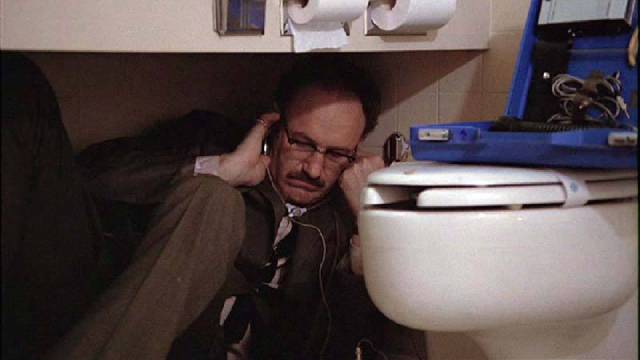
Some commenters complain that Coppola cheats here – and it’s true that there are two distinct recordings of the crucial line with diametrically opposed implications – but the entire essence of the film is that regardless of the objective qualities of what the technology can achieve, the results are nonetheless interpreted subjectively. Harry hears the line one way because he’s listening through his own neurotic obsession, coloured by guilt; it’s only after the fact that he can hear it clearly, and then it’s too late – too late to avert the act of violence, but also too late to retain his distance from that act; burdened with the knowledge of what he has been responsible for, he can do nothing about it and is now permanently subject to malevolent surveillance himself. The paranoia which gives rise to the compulsion to spy on others ultimately consumes everyone involved … although the timing was coincidental, Harry, just like Nixon, is brought down by his own attempts to maintain control.

StudioCanal’s 50th anniversary 4K restoration of The Conversation looks gorgeous – not in a pristine hi-def way, but with a convincing ’70s film-like quality; colours, contrast and grain capture an authentic representation of what the film looked like in 1974. Given the film’s subject, it’s not surprising that the soundtrack is as important as the visuals and the dual-mono track is richly detailed (there’s also a 5.1 remix); Walter Murch’s contribution to the film’s effectiveness can’t be overestimated. The sequences of Harry carefully cleaning away the extraneous noise and teasing out the actual words of the conversation display the sheer pleasure of a technical process which deflects from the deeper moral questions arising from the work. Interestingly, the distortions which initially conceal the couple’s words are very similar to Murch’s pioneering work on George Lucas’s THX 1138 (1971), which was executive produced by Coppola; in that movie, an entire society is oppressed by perpetual surveillance, suggesting the world which might eventually emerge from the technology being developed by Harry and others like him.
The dual-format release comes in an oversized box with a 64-page booklet of essays and images, two posters and a cassette of David Shire’s distinctive score. The disks include extras from earlier editions – commentaries from Coppola and Murch, several archival featurettes – and a 43-minute Q&A with Murch from 2017.
Comments